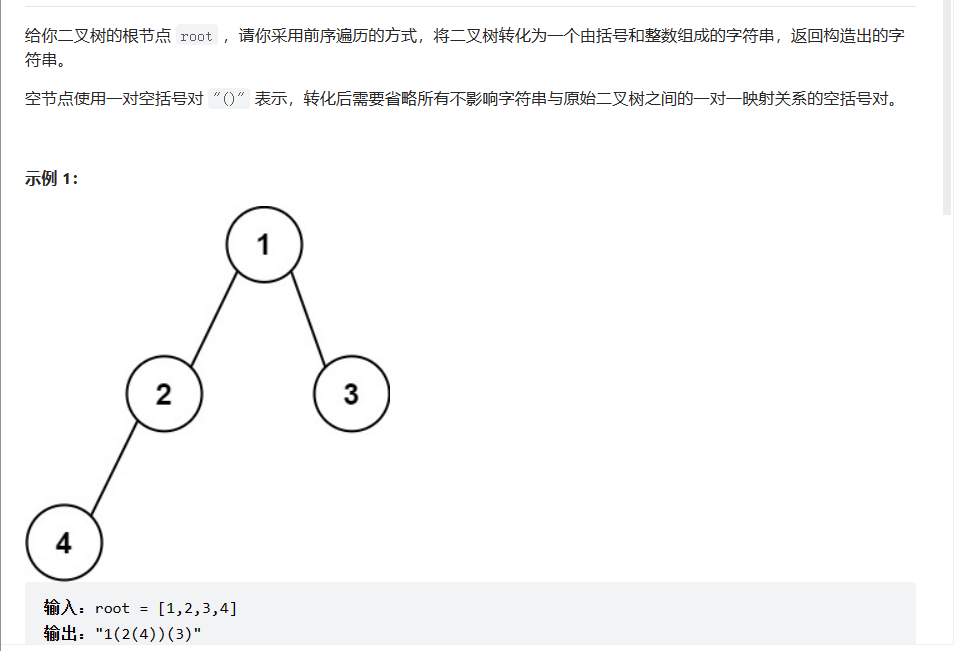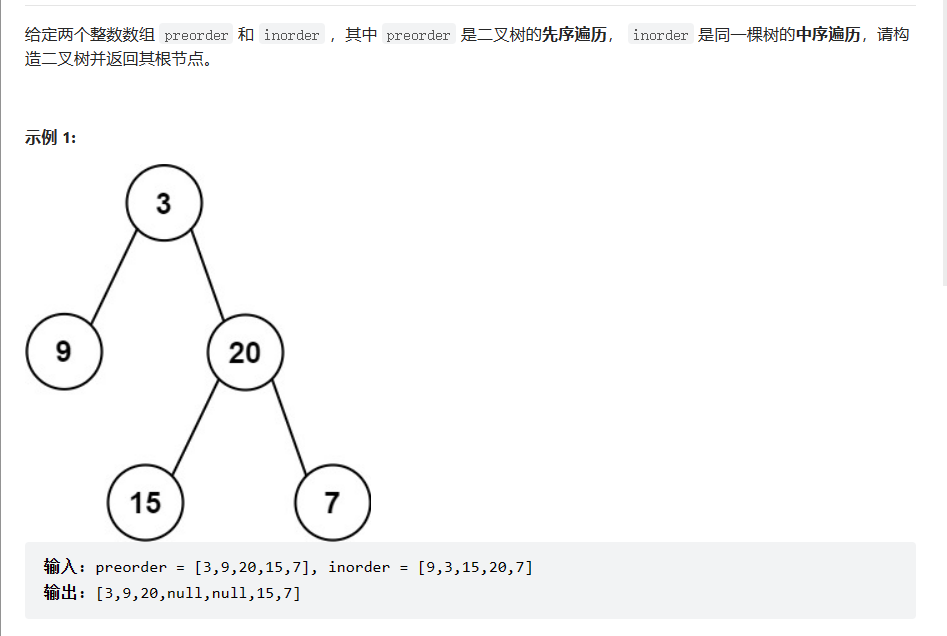这篇文章主要介绍“C++二叉搜索树BSTree如何使用”的相关知识,小编通过实际案例向大家展示操作过程,操作方法简单快捷,实用性强,希望这篇“C++二叉搜索树BSTree如何使用”文章能帮助大家解决问题。
一、概念
二叉搜索树又称二叉排序树,它或者是一棵空树,或者是具有以下性质的二叉树:
若它的左子树不为空,则左子树上所有节点的值都小于根节点的值
若它的右子树不为空,则右子树上所有节点的值都大于根节点的值
左<根<右
它的左右子树也分别为二叉搜索树
之所以又叫二叉排序树,是因为二叉搜索树中序遍历的结果是有序的

二、基础操作
1.查找find
基于二叉搜索树的特点,查找一个数并不难,若根节点不为空的情况下:
若根节点key==查找key,直接返回true
若根节点key>查找key,那得找到更小的,则往左子树查找
若根节点key<查找key,那得找到更大的,则往右子树查找
最多查找高度次,走到空为止,如果还没找到,则说明这个值不存在,返回false
bool find(const K& key){Node* cur = _root;while (cur){if (cur->_key < key){cur = cur->_right;}else if (cur->_key > key){cur = cur->_left;}else{return true;}}return false;}2.插入Insert
树为空,则直接插入,新增节点,直接插入root指针即可
树不为空,按二叉搜索树性质查找插入位置,插入新节点。
(注意:不能插入重复的元素,并且每次插入都是要定位到空节点的位置;我们先定义一个 cur从root开始,比较元素的大小:若插入的元素比当前位置元素小就往左走,比当前位置元素大就往右走,直到为空,相等就不能插入了;同时定义一个parent去记录当前 cur的前一个位置,最后判断cur是parent的左子树还是右子树即可)
bool Insert(const K& key){if (_root == nullptr){_root = new Node(key);return true;}Node* parent = nullptr;Node* cur = _root;while (cur){if (cur->_key < key){parent = cur;cur = cur->_right;}else if (cur->_key > key){parent = cur;cur = cur->_left;}else{return false;}}cur = new Node(key);if (parent->_key < key){parent->_right = cur;}else{parent->_left = cur;}return true;}3.中序遍历InOrder
递归走起,同时由于_root是私有的,外部不能访问,我们可以在类内给中序提供一个方法即可,就不需要传参了
void InOrder(){_InOrder(_root);cout << endl;}private:void _InOrder(Node* root){if (root == nullptr){return;}_InOrder(root->_left);cout << root->_key << " ";_InOrder(root->_right);}Node* _root = nullptr;4.删除erase
删除的情况比较多:
左右都为空:叶子结点,直接置空并链接到空指针
左为空或右为空:进行托孤:只有一个子节点,删除自己本身,并链接子节点和父节点(注意:如果父亲是空,也就是要删除根结点,此时根节点没有父亲,单独判断一下)
左右都不为空:找出替换节点:右子树最小节点**、**左子树最大节点。替换节点可以作为交换和删除进行交换,交换后删除交换节点、交换节点要么没有孩子,要么只有一个孩子可以直接删除
但是左右都为空可以纳入到左为空或右为空的情况



注意:

代码实现:
bool Erase(const K& key){Node* parent = nullptr;Node* cur = _root;while (cur){if (cur->_key < key){parent = cur;cur = cur->_right;}else if (cur->_key > key){parent = cur;cur = cur->_left;}else{//左为空if (cur->_left == nullptr){//删除根结点//if(parent==nullptr)if (cur == _root){_root = cur->_right;}else{if (parent->_left == cur){parent->_left = cur->_right;}else{parent->_right = cur->_right;}}delete cur;}//右为空else if (cur->_right == nullptr){if (cur == _root){_root = cur->_left;}else{if (parent->_left == cur){parent->_left = cur->_left;}else{parent->_right = cur->_left;}}delete cur;}//左右都不为空,找替换节点else{//不能初始化为nullptrNode* parent = cur;//右子树最小节点Node* minRight = cur->_right;while (minRight->_left){parent = minRight;minRight = minRight->_left;}cur->_key = minRight->_key;//判断minRight是父亲的左还是右if (minRight == parent->_left){parent->_left = minRight->_right;}else{parent->_right = minRight->_right;}delete minRight;}return true;}}return false;}三、递归写法
1.递归查找
这个比较简单:苏醒把,递归时刻
bool _FindR(Node* root, const K& key){if (root == nullptr) return false;else if (root->_key < key) return _FindR(root->_right, key);else if (root->_key > key) return _FindR(root->_left, key);else return true;}2.递归插入
最大的问题是插入之后跟父亲进行链接,如果直接给root是不可以的,因为root是栈帧里面的参数,只是局部变量:加上引用
bool _InsertR(Node*& root, const K& key){if (root == nullptr){root = new Node(key);return true;}else if (root->_key < key) return _InsertR(root->_right, key);else if (root->_key > key) return _InsertR(root->_left, key);else return false;}
3.递归删除
递归删除怎么找到父节点?root = root->_left/ root = root->_right;

bool _EraseR(Node*& root, const K& key){if (root == nullptr){return false;}if (root->_key < key){return _EraseR(root->_right, key);}else if (root->_key > key){return _EraseR(root->_left, key);}else{Node* del = root;if (root->_right == nullptr){root = root->_left;}else if (root->_left == nullptr){root = root->_right;}else{Node* minRight = root->_right;while (minRight->_left){minRight = minRight->_left;}swap(root->_key, minRight->_key);return _EraseR(root->_right, key);}delete del;return true;}}四、应用
最优情况下,二叉搜索树为完全二叉树,其平均比较次数为:log2N
最差情况下,二叉搜索树退化为单支树,其平均比较次数为: N/2

K模型:K模型即只有key作为关键码,结构中只需要存储Key即可,关键码即为需要搜索到的值,判断关键字是否存在。
比如:给一个单词word,判断该单词是否拼写正确,具体方式如下:
以单词集合中的每个单词作为key,构建一棵二叉搜索树,在二叉搜索树中检索该单词是否存在,存在则拼写正确,不存在则拼写错误。
KV模型:每一个关键码key,都有与之对应的值Value,即**<Key, Value>**的键值对。
比如英汉词典就是英文与中文的对应关系,通过英文可以快速找到与其对应的中文,英文单词与其对应的中文<word, chinese>就构成一种键值对;再比如统计单词次数,统计成功后,给定单词就可快速找到其出现的次数,单词与其出现次数就是**<word, count>**就构成一种键值对。
namespace KV{template <class K,class V>struct BSTreeNode{BSTreeNode<K,V>* _left;BSTreeNode<K,V>* _right;K _key;V _value;BSTreeNode(const K& key,const V&value):_key(key),_value(value),_left(nullptr),_right(nullptr){}};template <class K,class V>class BSTree{ typedef BSTreeNode<K, V> Node;public:bool Insert(const K& key, const V& value)Node* find(const K& key)void InOrder()private:Node* _root = nullptr;};}void TestBSTree(){//key/Value的搜索模型;通过key查找或修改ValueKV::BSTree<string, string> dict;dict.Insert("sort", "排序");dict.Insert("string", "字符串");dict.Insert("left", "左");dict.Insert("right", "右");string str;while (cin >> str){KV::BSTreeNode<string, string>* ret = dict.find(str);if (ret){cout << ret->_value << endl;}else{cout << "找不到" << endl;}}}源代码:
BSTree.h
#include <iostream>using namespace std;namespace K{template <class K>struct BSTreeNode{BSTreeNode<K>* _left;BSTreeNode<K>* _right;K _key;BSTreeNode(const K& key):_key(key),_left(nullptr),_right(nullptr){}};template <class K>class BSTree{typedef BSTreeNode<K> Node;public:BSTree():_root(nullptr){}BSTree(const BSTree<K>& t){_root = Copy(t._root);}BSTree<K>& operator = (BSTree<K> t){swap(_root, t._root);return *this;}~BSTree(){Destroy(_root);_root = nullptr;}bool Insert(const K& key){if (_root == nullptr){_root = new Node(key);return true;}Node* parent = nullptr;Node* cur = _root;while (cur){if (cur->_key < key){parent = cur;cur = cur->_right;}else if (cur->_key > key){parent = cur;cur = cur->_left;}else{return false;}}cur = new Node(key);if (parent->_key < key){parent->_right = cur;}else{parent->_left = cur;}return true;}bool find(const K& key){Node* cur = _root;while (cur){if (cur->_key < key){cur = cur->_right;}else if (cur->_key > key){cur = cur->_left;}else{return true;}}return false;}bool Erase(const K& key){Node* parent = nullptr;Node* cur = _root;while (cur){if (cur->_key < key){parent = cur;cur = cur->_right;}else if (cur->_key > key){parent = cur;cur = cur->_left;}else{//左为空if (cur->_left == nullptr){//删除根结点//if(parent==nullptr)if (cur == _root){_root = cur->_right;}else{if (parent->_left == cur){parent->_left = cur->_right;}else{parent->_right = cur->_right;}}delete cur;}//右为空else if (cur->_right == nullptr){if (cur == _root){_root = cur->_left;}else{if (parent->_left == cur){parent->_left = cur->_left;}else{parent->_right = cur->_left;}}delete cur;}//左右都不为空,找替换节点else{//不能初始化为nullptrNode* parent = cur;//右子树最小节点Node* minRight = cur->_right;while (minRight->_left){parent = minRight;minRight = minRight->_left;}cur->_key = minRight->_key;//判断minRight是父亲的左还是右if (minRight == parent->_left){parent->_left = minRight->_right;}else{parent->_right = minRight->_right;}delete minRight;}return true;}}return false;}void InOrder(){_InOrder(_root);cout << endl;} //递归bool InsertR(const K& key){return _InsertR(_root, key);}bool FindR(const K& key){return _FindR(_root, key);}bool EraseR(const K& key){return _EraseR(_root, key);}private:void Destroy(Node* root){if (root == nullptr){return;}Destroy(root->_left);Destroy(root->_right);delete root;}Node* Copy(Node* root){if (root == nullptr)return nullptr;Node* newRoot = new Node(root->_key);newRoot->_left = Copy(root->_left);newRoot->_right = Copy(root->_right);return newRoot;}bool _EraseR(Node*& root, const K& key){if (root == nullptr){return false;}if (root->_key < key){return _EraseR(root->_right, key);}else if (root->_key > key){return _EraseR(root->_left, key);}else{Node* del = root;if (root->_right == nullptr){root = root->_left;}else if (root->_left == nullptr){root = root->_right;}else{Node* minRight = root->_right;while (minRight->_left){minRight = minRight->_left;}swap(root->_key, minRight->_key);return _EraseR(root->_right, key);}delete del;return true;}}bool _InsertR(Node*& root, const K& key){if (root == nullptr){root = new Node(key);return true;}else if (root->_key < key)return _InsertR(root->_right, key);else if (root->_key > key)return _InsertR(root->_left, key);elsereturn false;}bool _FindR(Node* root, const K& key){if (root == nullptr) return false;else if (root->_key < key) return _FindR(root->_right, key);else if (root->_key > key) return _FindR(root->_left, key);else return true;}void _InOrder(Node* root){if (root == nullptr){return;}_InOrder(root->_left);cout << root->_key << " ";_InOrder(root->_right);}Node* _root = nullptr;};}namespace KV{template <class K,class V>struct BSTreeNode{BSTreeNode<K,V>* _left;BSTreeNode<K,V>* _right;K _key;V _value;BSTreeNode(const K& key,const V&value):_key(key),_value(value),_left(nullptr),_right(nullptr){}};template <class K,class V>class BSTree{typedef BSTreeNode<K, V> Node;public:bool Insert(const K& key, const V& value){if (_root == nullptr){_root = new Node(key, value);return true;}Node* parent = nullptr;Node* cur = _root;while (cur){if (cur->_key < key){parent = cur;cur = cur->_right;}else if (cur->_key > key){parent = cur;cur = cur->_left;}else{return false;}}cur = new Node(key, value);if (parent->_key < key){parent->_right = cur;}else{parent->_left = cur;}return true;}Node* find(const K& key){Node* cur = _root;while (cur){if (cur->_key < key){cur = cur->_right;}else if (cur->_key > key){cur = cur->_left;}else{return cur;}}return nullptr;}void InOrder(){_InOrder(_root);}private:void _InOrder(Node* root){if (root == nullptr) return;_InOrder(root->_left);cout << root->_key << ":"<<root->_value<<endl;_InOrder(root->_right);}Node* _root = nullptr;};}void TestBSTree1(){int a[] = { 8, 3, 1, 10, 6, 4, 7, 14, 13 };K::BSTree<int> t;for (auto e : a){t.Insert(e);}t.InOrder();K::BSTree<int> copyt(t);copyt.InOrder();t.InsertR(9);t.InOrder();t.EraseR(9);t.InOrder();t.EraseR(3);t.InOrder();for (auto e : a){t.EraseR(e); t.InOrder();}}void TestBSTree2(){KV::BSTree<string, string> dict;dict.Insert("sort", "排序");dict.Insert("string", "字符串");dict.Insert("left", "左");dict.Insert("right", "右");string str;while (cin >> str){KV::BSTreeNode<string, string>* ret = dict.find(str);if (ret){cout << ret->_value << endl;}else{cout << "找不到" << endl;}}}void TestBSTree3(){string arr[] = { "苹果","西瓜","苹果" };KV::BSTree<string, int> countTree;for (auto e : arr){auto* ret = countTree.find(e);if (ret == nullptr){countTree.Insert(e, 1);}else{ret->_value++;}}countTree.InOrder();}#include "BSTree.h"int main(){ //TestBSTree1();TestBSTree2(); //TestBSTree3();return 0;}五、题目练习
根据二叉树创建字符串

前序遍历,左为空,右不为空的括号不可以省略,右为空的括号可以省略
class Solution {public: string tree2str(TreeNode* root) { if(root == nullptr) return string(); string ret; ret += to_string(root->val); if(root->left) { ret+='('; ret+= tree2str(root->left); ret+=')'; } else if(root->right) { ret+="()"; } if(root->right) { ret+='('; ret+=tree2str(root->right); ret+=')'; } return ret; }};二叉树的层序遍历

层序遍历,可以通过一个队列来实现,同时定义每次队列的大小
class Solution {public: vector<vector<int>> levelOrder(TreeNode* root) { queue<TreeNode*> q; vector<vector<int>> vv; size_t levelSize = 0; if(root) { q.push(root); levelSize=1; } while(!q.empty()) { vector<int> v; while(levelSize--) { TreeNode* front = q.front(); q.pop(); v.push_back(front->val); if(front->left) { q.push(front->left); } if(front->right) { q.push(front->right); } } vv.push_back(v); levelSize = q.size(); } return vv; }};二叉树的最近公共祖先


class Solution { bool isInTree(TreeNode*root,TreeNode*x) { if(root == nullptr) return false; if(root == x) return true; else return isInTree(root->left,x) || isInTree(root->right,x); }public: TreeNode* lowestCommonAncestor(TreeNode* root, TreeNode* p, TreeNode* q) { if(root==nullptr) return nullptr; if(root == p||root==q) return root; bool pLeft = isInTree(root->left,p); bool pRight = !pLeft; bool qLeft = isInTree(root->left,q); bool qRight = !qLeft; //一个在左一个在右 if((pLeft&&qRight)||(pRight&&qLeft)) return root; //同左 if(pLeft&&qLeft) return lowestCommonAncestor(root->left,p,q); //同右 else return lowestCommonAncestor(root->right,p,q); }};把根到对应节点的路径存储起来,在找出相交的结点即是最近的公共结点:

class Solution { bool GetPath(TreeNode*root,TreeNode*x,stack<TreeNode*>& stack) { if(root == nullptr) return false; stack.push(root); if(root == x) { return true; } if(GetPath(root->left,x,stack)) return true; if(GetPath(root->right,x,stack)) return true; stack.pop(); return false; }public: TreeNode* lowestCommonAncestor(TreeNode* root, TreeNode* p, TreeNode* q) { if(root==nullptr) return nullptr; stack<TreeNode*> pPath; stack<TreeNode*> qPath; GetPath(root,p,pPath); GetPath(root,q,qPath); //长的先pop while(pPath.size()!=qPath.size()) { if(pPath.size()>qPath.size()) { pPath.pop(); } else qPath.pop(); } //同时pop,找出交点 while(pPath.top()!=qPath.top()) { pPath.pop(); qPath.pop(); } return pPath.top(); }};二叉搜索树与双向链表

思路一:中序遍历,将节点放到一个vector中,在链接节点,但是空间复杂度不符合题目要求:
class Solution {void InOrder(TreeNode*root,vector<TreeNode*>& v){if(root==nullptr) return;InOrder(root->left,v);v.push_back(root);InOrder(root->right,v);}public: TreeNode* Convert(TreeNode* pRootOfTree) {if(pRootOfTree==nullptr) return nullptr;vector<TreeNode*> v;InOrder(pRootOfTree,v);if(v.size()<=1) return v[0];v[0]->left =nullptr;v[0]->right = v[1];for(int i =1;i<v.size()-1;i++){v[i]->left = v[i-1];v[i]->right = v[i+1];}v[v.size()-1]->left = v[v.size()-2];v[v.size()-1]->right = nullptr;return v[0];}};思路二:递归直接进行转换

class Solution {void InOrder(TreeNode*cur,TreeNode*&prev){if(cur==nullptr){return;}InOrder(cur->left,prev);cur->left = prev;if(prev){prev->right = cur;}prev = cur;InOrder(cur->right,prev);}public: TreeNode* Convert(TreeNode* pRootOfTree) {TreeNode*prev = nullptr;InOrder(pRootOfTree,prev);//找头TreeNode*head = pRootOfTree;while(head&&head->left){head = head->left;}return head;}};从前序与中序遍历序列构造二叉树

根据前序结果去创建树,前序是根左右,前序第一个元素就是根,在通过中序去进行分割左右子树。子树区间确认是否继续递归创建子树,区间不存在则是空树。所以根据前序先构造根,在通过中序构造左子树、在构造右子树即可。
class Solution { TreeNode* _buildTree(vector<int>& preorder, vector<int>& inorder,int&prei,int inbegin,int inend) { if(inbegin>inend) { return nullptr; } TreeNode*root = new TreeNode(preorder[prei]); int rooti = inbegin; while(inbegin<=inend) { if(preorder[prei] == inorder[rooti]) { break; } else rooti++; } prei++; //[inbegin,rooti-1]rooti[rooti+1,inend] root->left= _buildTree(preorder,inorder,prei,inbegin,rooti-1); root->right = _buildTree(preorder,inorder,prei,rooti+1,inend); return root; }public: TreeNode* buildTree(vector<int>& preorder, vector<int>& inorder) { int prei = 0; return _buildTree(preorder,inorder,prei,0,inorder.size()-1); }};传引用问题:因为prei是遍历前序数组开始的下标,整个递归遍历中都要使用,所以我们需要传引用。如果不是传引用而是传值的话,左子树构建好返回,如果此时prei不是传引用,只是形参,无法将上一次递归的结果保留下来,那么也就无构建右子树了。
从中序与后序遍历序列构造二叉树

根据后序遍历的最后一个元素可以确定根结点,有了根结点做为切割点然后再去根据中序遍历划分左右区间,在继续下去,构造成二叉树,区间不存在就是空树了。同时,后序遍历是左右根,所以最后一个是根节点。所以当我们构造根结点后,由于前面是右子树,所以先构造右子树,在构造左子数。
class Solution { TreeNode* _buildTree(vector<int>& inorder, vector<int>& postorder,int &posi,int inbegin,int inend) { if(inbegin>inend) { return nullptr; } TreeNode* root = new TreeNode(postorder[posi]); int rooti = inbegin; while(inbegin<=inend) { if(postorder[posi] == inorder[rooti]) { break; } else rooti++; } posi--; //[inbegin,rooti-1]rooti[rooti+1,inend]; root->right = _buildTree(inorder,postorder,posi,rooti+1,inend); root->left = _buildTree(inorder,postorder,posi,inbegin,rooti-1); return root; }public: TreeNode* buildTree(vector<int>& inorder, vector<int>& postorder) { int posi = postorder.size()-1; return _buildTree(inorder,postorder,posi,0,inorder.size()-1); }};
关于“C++二叉搜索树BSTree如何使用”的内容就介绍到这里了,感谢大家的阅读。如果想了解更多行业相关的知识,可以关注编程网行业资讯频道,小编每天都会为大家更新不同的知识点。




